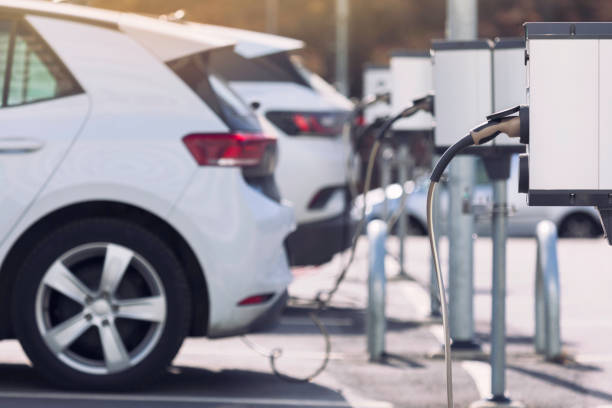Lithium-ion batteries have been the cornerstone of energy storage technology for several decades now, powering everything from smartphones and laptops to electric vehicles and renewable energy grids. However, with mounting concerns over lithium’s environmental impact, availability, and cost, the scientific community and industry have been exploring alternatives. One such promising substitute is the sodium-ion battery. This article delves into whether sodium-ion batteries can replace lithium-ion in the future.
Understanding Lithium-ion Batteries
To appreciate the potential of sodium-ion batteries, it’s crucial to understand the workings and limitations of lithium-ion batteries. Lithium-ion batteries function on the principle of lithium ions moving from the negative electrode (anode) to the positive electrode (cathode) during discharge and back when charging.
While they offer high energy density, long cycle life, and relatively low self-discharge, these batteries are not without flaws. Firstly, lithium is not evenly distributed globally, leading to geopolitical challenges and potential supply chain vulnerabilities. Secondly, lithium extraction is water-intensive and can lead to soil contamination, posing serious environmental concerns. Lastly, as demand for electric vehicles and renewable energy storage grows, the demand for lithium is expected to outstrip supply, driving up costs.
Sodium-ion Batteries: The Potential Successor
Sodium-ion batteries operate similarly to lithium-ion batteries. They rely on the movement of sodium ions from the anode to the cathode during discharge and back during charging. However, what sets sodium apart is its abundance. Sodium, primarily derived from salt (sodium chloride), is one of the most abundant elements on Earth, and it’s evenly distributed worldwide. This accessibility could lead to a more robust and resilient supply chain for battery production.
Moreover, sodium-ion batteries could potentially be more environmentally friendly than their lithium counterparts. Sodium extraction from seawater or salt mines requires less water and results in less environmental damage.
The Current Challenges for Sodium-ion Batteries
Despite the promise, several hurdles need to be overcome before sodium-ion technology can replace lithium-ion. One of the most significant is energy density. As of my knowledge cut-off in September 2021, sodium-ion batteries have a lower energy density than lithium-ion batteries, meaning they can’t store as much energy for a given weight or volume. This lower energy density is primarily due to sodium ions being larger than lithium ions, which affects how many can fit into the anode and cathode.
Another challenge lies in finding suitable materials for the battery’s components. While some materials used in lithium-ion batteries can be utilized in sodium-ion batteries, others cannot. For instance, graphite, commonly used as the anode in lithium-ion batteries, doesn’t work well with sodium ions due to their larger size. Researchers are exploring other materials like hard carbon, but these alternatives often come with their own set of challenges.
Moreover, the cycle life of sodium-ion batteries needs to be improved. Cycle life refers to the number of charge and discharge cycles a battery can withstand before its performance significantly degrades. While lithium-ion batteries can typically handle hundreds to thousands of cycles, sodium-ion batteries currently lag behind.
The Future of Sodium-ion Batteries
Despite these challenges, significant progress has been made in the field of sodium-ion batteries, and more is likely to come. Research and development are ongoing to improve energy density, find suitable materials, and increase cycle life. In the coming years, we could see significant advancements that bring sodium-ion batteries closer to parity with lithium-ion batteries or even outperform them in certain aspects.
One promising avenue is the development of new materials for use in sodium-ion batteries. In particular, researchers are exploring various types of hard carbon, alloy-based anodes, and organic cathodes that could potentially offer higher energy densities and better cycle lives. Other research is focused on optimizing the design of the battery cells themselves, to allow for more efficient packing of active material and hence increase energy density.
It’s also worth noting that certain applications might be more suitable for sodium-ion batteries even with their current limitations. For instance, grid-scale energy storage could be an ideal use case. These systems typically prioritize cost-effectiveness and sustainability over energy density, which aligns with the strengths of sodium-ion technology.
Moreover, given the abundance and accessibility of sodium, developing countries with limited access to lithium resources could adopt sodium-ion technology for their energy storage needs. This could play a pivotal role in expanding access to renewable energy and driving global sustainability efforts.
Another critical factor that could influence the future of sodium-ion batteries is legislation. As environmental concerns become increasingly paramount, governments around the world are tightening regulations around mining and resource extraction. If these trends continue, the environmental advantages of sodium-ion batteries could become a key driver in their adoption.
While lithium-ion batteries currently hold the crown in the realm of energy storage, sodium-ion batteries present a promising alternative. With their potential for lower cost, greater supply chain resilience, and reduced environmental impact, they have significant advantages that align with the pressing needs of our time.
However, challenges remain. As of now, sodium-ion batteries can’t match the energy density of lithium-ion batteries, and there is still much work to be done in terms of materials and cycle life. But with the pace of research and development in this field, these hurdles may be overcome sooner than we think.
In conclusion, whether sodium-ion batteries will replace lithium-ion batteries is a complex question that hinges on numerous factors, including technological breakthroughs, market dynamics, and legislative decisions. However, the potential is undeniable, and the benefits are compelling. As such, sodium-ion batteries could very well play a significant role in the future of energy storage, whether as a complement to lithium-ion batteries or as a worthy successor.







